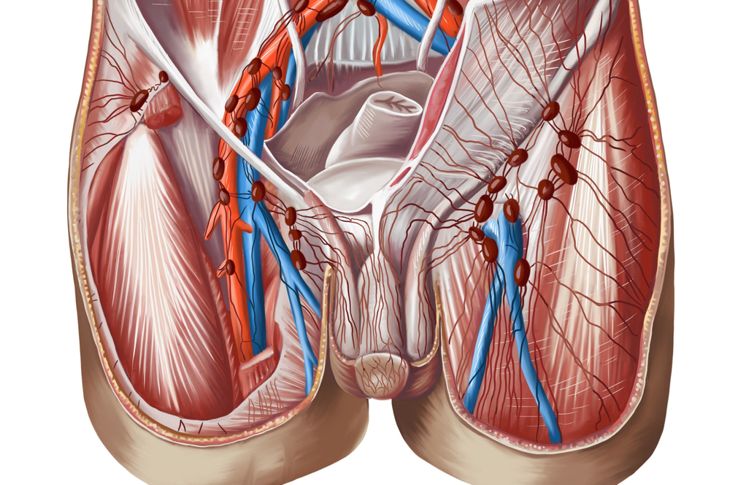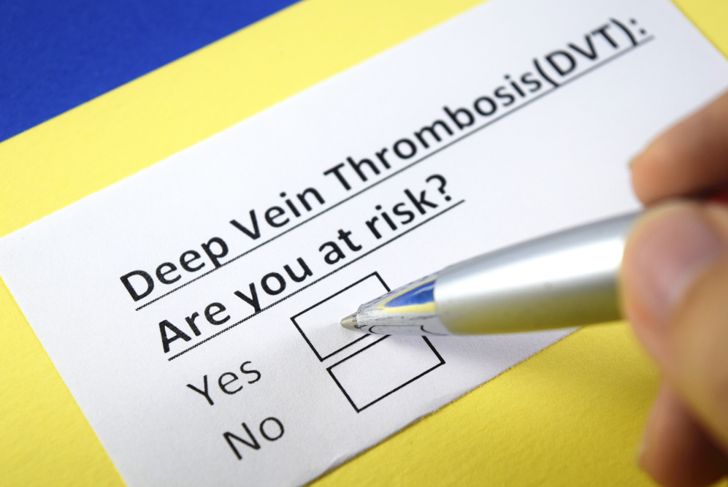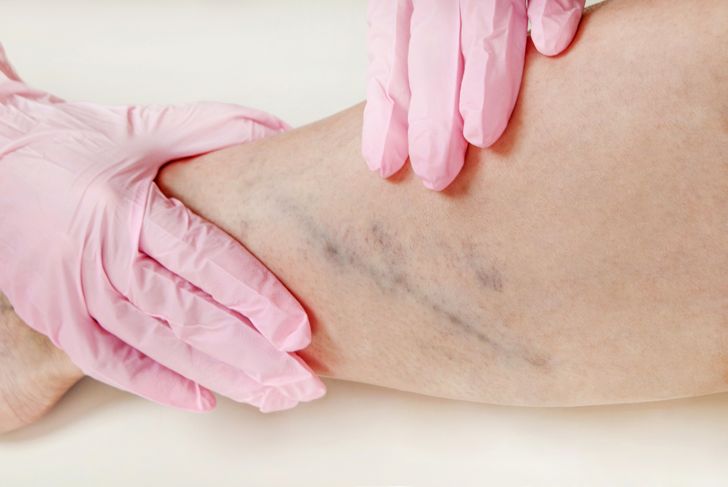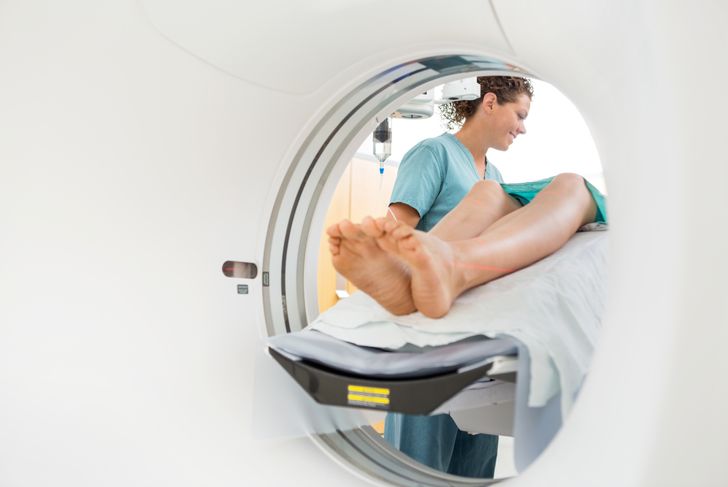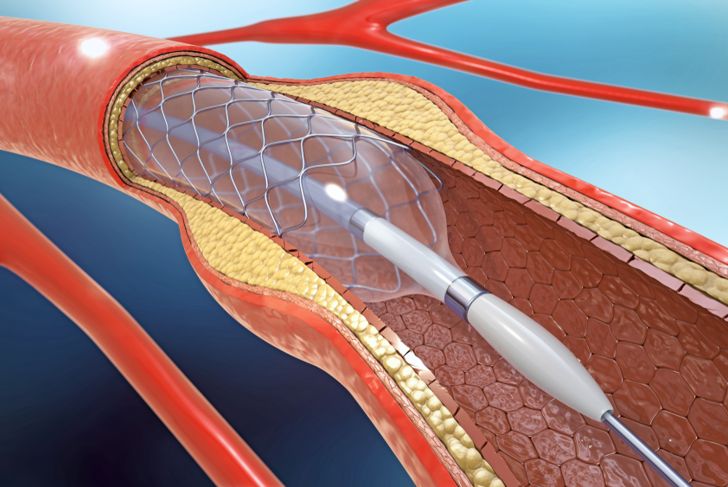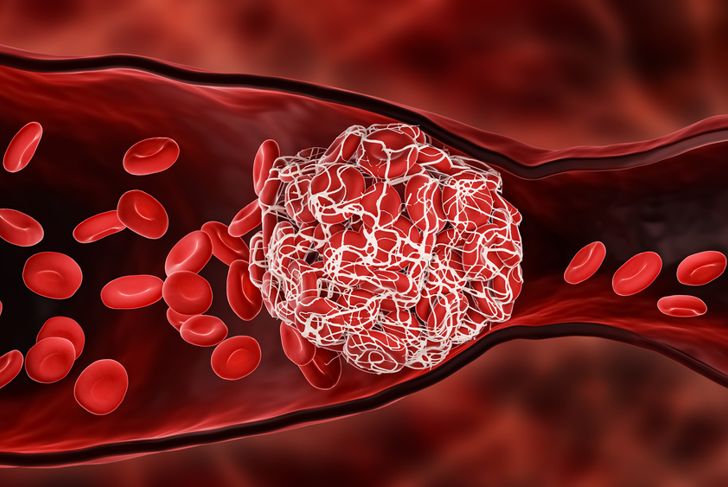May Thurner syndrome or iliac vein compression syndrome is chronic compression of the left iliac vein by the right iliac artery where they cross at the pelvis. Both blood vessels originate in the abdomen near the lumbar spine, close together. In May Thurner syndrome, the right iliac artery pulsates and pushes the left iliac vein against the lower spine. This syndrome almost always affects the vessels on the left side and only rarely occurs on the right.
Causes
May Thurner syndrome begins with the compression of the iliac vein, which causes changes to the vessel, resulting in scar tissue. Over time, these growths can lead to complete or partial obstruction of the blood vessel. May Thurner syndrome is usually the cause of left-sided deep vein thrombosis (DVT) in the iliac or femoral veins, and researchers believe it may be more common than once thought.
May Thurner Syndrome and DVTs
Most people who have May Thurner syndrome do not know they have it until they develop a DVT. Signs of a DVT include pain, tenderness, swelling, warmth, and discoloration in the leg. Deep vein thrombosis is not life-threatening, but if the blood clot breaks free, it can lodge itself in the lungs, causing a pulmonary embolism, which is a medical emergency. DVT can also cause blood to pool in the legs, leading to chronic swelling, discoloration, and ulcers.
Prevalence
The prevalence of May Thurner syndrome is unknown. Researchers believe it is responsible for between two and five percent of all DVTs, though research conducted on cadavers indicates that this number might be as high as 32%. Most people with May Thurner syndrome have mild symptoms or none at all, making it difficult to determine the exact prevalence.
Stages
May Thurner syndrome has three stages. The first is the common iliac vein compression without any symptoms. Stage two is the development of the scar tissue or spur, and stage three is the development of a DVT in the left lower extremity. Most people who have May Thurner syndrome will never know unless they develop a DVT.
Risk Factors
May Thurner syndrome affects women twice as much as men and is most common in the 20s and 30s. Although part of May Thurner syndrome is due to the iliac artery pressing against the vein, other factors increase the risk of it causing a DVT. These include long periods of inactivity, oral birth control, pregnancy, postpartum, and surgical recovery.
Symptoms
Patients with May Thurner syndrome usually seek medical attention due to a left-sided DVT. The most common symptoms are left-sided swelling and pain in the leg. People with this condition may also experience inflammation in the leg or leg swelling if blood flow is blocked. Symptoms may occur on the right lower extremity or on both sides, but this is rare.
Diagnosis
There are no diagnostic criteria for May Thurner syndrome. Sometimes, if someone with the condition lies on their stomach, it is enough to remove pressure from the vein and restore normal blood flow. Various imaging studies help determine a diagnosis and treatment plan, including CT, ultrasound, and magnetic resonance venography. The latter involves injecting dye into the veins to see how the blood is flowing.
Aggressive Treatment
The treatment for May Thurner syndrome is actually focused on treating the DVT associated with vein compression. Blood thinners are recommended to prevent blood clots. Two other treatments are catheter-directed thrombolytic therapy and angioplasty with stenting. In the first, the surgeon guides a catheter into the vein and releases a clot-dissolving medication. If the vein is too narrow after the clot dissolves, the surgeon may perform angioplasty; they use a balloon catheter to open the vein and insert a stent to keep the vein open and avoid future clots.
Vena Cava Filters
Vena cava filters are not always necessary in people with May Thurner syndrome; however, they are often used to prevent further complications from a DVT in patients who cannot take blood-thinning medications. A small filter is placed into the inferior vena cava, a large vein in the middle of the body that returns blood to the heart. The filter catches small clots as they move through the body, preventing them from getting into the lungs and causing a pulmonary embolism.
Prognosis and Complications
In most cases, people do not know that they have May Thurner syndrome, and it may never progress to a DVT. For those who develop a DVT from this underlying condition, the post-thrombotic syndrome is the most common complication. It causes pain, discoloration, and swelling in the leg after recovering from a DVT.

 Home
Home Health
Health Diet & Nutrition
Diet & Nutrition Living Well
Living Well More
More